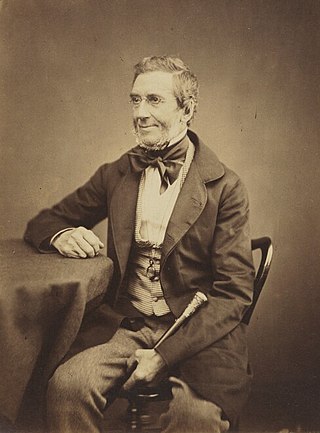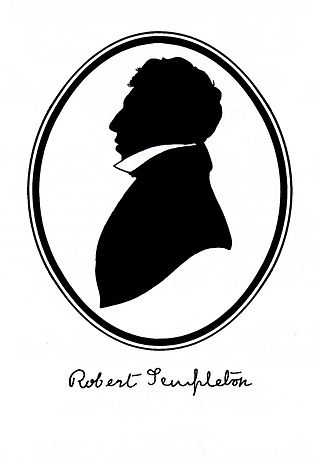
Chalcid wasps are insects within the superfamily Chalcidoidea, part of the order Hymenoptera. The superfamily contains some 22,500 known species, and an estimated total diversity of more than 500,000 species, meaning the vast majority have yet to be discovered and described. The name "chalcid" is often confused with the name "chalcidid", though the latter refers strictly to one constituent family, the Chalcididae, rather than the superfamily as a whole; accordingly, most recent publications (e.g.,) use the name "chalcidoid" when referring to members of the superfamily.

John Obadiah Westwood was an English entomologist and archaeologist also noted for his artistic talents. He published several illustrated works on insects and antiquities. He was among the first entomologists with an academic position at Oxford University. He was a natural theologian, staunchly anti-Darwinian, and sometimes adopted a quinarian viewpoint. Although he never travelled widely, he described species from around the world on the basis of specimens, especially of the larger, curious, and colourful species, obtained by naturalists and collectors in England.

George Robert Waterhouse was an English naturalist. He was a keeper at the department of geology and later curator of the Zoological Society of London's museum.

John Curtis was an English entomologist and illustrator.

Francis Walker was an English entomologist. He was born in Southgate, London, on 31 July 1809 and died at Wanstead, England on 5 October 1874. He was one of the most prolific authors in entomology, and stirred controversy during his later life as his publications resulted in a huge number of junior synonyms. However, his assiduous work on the collections of the British Museum had great significance.

Alexander Henry Haliday was an Irish entomologist. He is primarily known for his work on Hymenoptera, Diptera, and Thysanoptera, but worked on all insect orders and on many aspects of entomology.

Robert Templeton was a naturalist, artist, and entomologist, and was born at Cranmore House, Belfast, Ireland.
Francis Polkinghorne Pascoe was an English entomologist mainly interested in beetles.

James Charles Dale was an English naturalist who devoted almost all of his adult life to entomology.
Entomology, the study of insects, progressed between 1800 and 1850, with the publication of important texts, definition of new orders such as Aphaniptera and Strepsiptera, and the shift to specialization. The following timeline indicates significant events in entomology in this time period.

André Jean Baptiste Robineau-Desvoidy was a French physician and entomologist specialising in the study of Diptera (flies) and to some extent of the Coleoptera (beetles).

The Mymaridae, commonly known as fairyflies or fairy wasps, are a family of chalcidoid wasps found in temperate, subtropical, and tropical regions throughout the world. The family contains around 100 genera with 1,400 species.
British Entomology is a classic work of entomology by John Curtis, FLS. It is subtitled Being Illustrations and Descriptions of the Genera of Insects found in Great Britain and Ireland: Containing Coloured Figures from Nature of the Most Rare and Beautiful Species, and in Many Instances of the Plants Upon Which they are Found.
William Edward Shuckard was an English bookseller and entomologist. He was also librarian of the Royal Society and translated Manual of Entomology Hermann Burmeister (1807-1892). He was a specialist in Hymenoptera but worked on Coleoptera in his early years).
Arthur Francis Hemming, CMG, CBE was an English entomologist who specialised in Lepidoptera. He was mostly known, both professionally and socially, by his middle-name as Francis Hemming.

George Talbot FES was an English entomologist who specialised in butterflies. He wrote about 150 scientific papers, the majority being primarily systematic, consisting of the description of new species or the revision of various genera. He was also responsible for the curation and preservation of the Joicey collection of Lepidoptera prior to its accession by the Natural History Museum.

The Entomological Magazine was a publication devoted to entomology.

An Essay on the Classification of the Parasitic Hymenoptera of Britain Which Correspond with the Ichneumones Minuti of Linnaeus is a Victorian monograph of entomology published in the Entomological Magazine between 1833 and 1838, by the Irish entomologist Alexander Henry Haliday.
Ochetellus democles is a species of ant in the genus Ochetellus. Described by Francis Walker in 1839, the ant was originally thought to be a small wasp based on a male collected by Charles Darwin. It was first recognised as an ant in 1988.

Ilytheinae is a subfamily of shore flies in the family Ephydridae.














